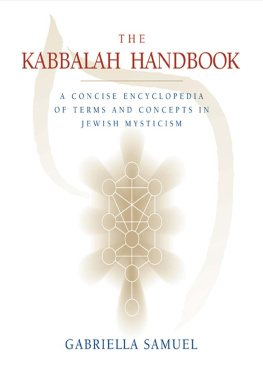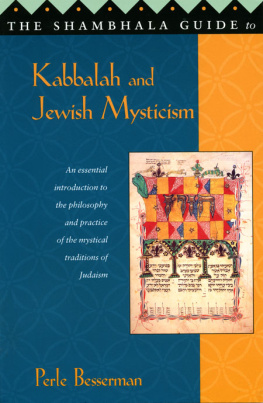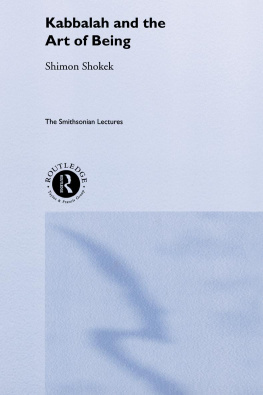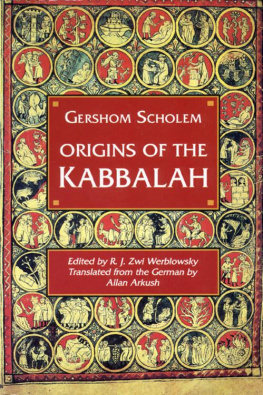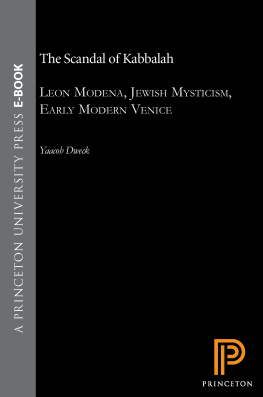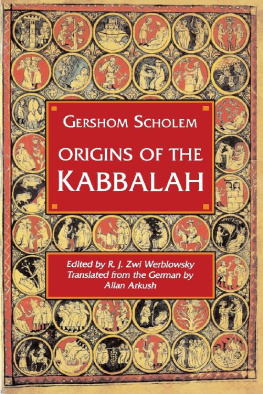THE KABBALAH HANDBOOK
A Concise Encyclopedia of Terms
and Concepts in Jewish Mysticism
Gabriella Samuel
JEREMY P. TARCHER/PENGUIN a member of Penguin Group (USA) Inc., New York
JEREMY P. TARCHER/PENGUIN
Published by the Penguin Group
Penguin Group (USA) Inc., 375 Hudson Street, New York, New York 10014, USA Penguin Group (Canada), 90 Eglinton Avenue East, Suite 700, Toronto, Ontario M4P 2Y3, Canada (a division of Pearson Penguin Canada Inc.) Penguin Books Ltd, 80 Strand, London WC2R 0RL, England Penguin Ireland, 25 St Stephens Green, Dublin 2, Ireland (a division of Penguin Books Ltd) Penguin Group (Australia), 250 Camberwell Road, Camberwell, Victoria 3124, Australia (a division of Pearson Australia Group Pty Ltd) Penguin Books India Pvt Ltd, 11 Community Centre, Panchsheel Park, New Delhi110 017, India Penguin Group (NZ), 67 Apollo Drive, Rosedale, North Shore 0745, Auckland, New Zealand (a division of Pearson New Zealand Ltd) Penguin Books (South Africa) (Pty) Ltd, 24 Sturdee Avenue, Rosebank, Johannesburg 2196, South Africa
Penguin Books Ltd, Registered Offices: 80 Strand, London WC2R 0RL, England
Copyright 2007 by Gabriella Samuel
All rights reserved. No part of this book may be reproduced, scanned, or distributed in any printed or electronic form without permission. Please do not participate in or encourage piracy of copyrighted materials in violation of the authors rights. Purchase only authorized editions.
Published simultaneously in Canada
Most Tarcher/Penguin books are available at special quantity discounts for bulk purchase for sales promotions, premiums, fund-raising, and educational needs. Special books or book excerpts also can be created to fit specific needs. For details, write Penguin Group (USA) Inc. Special Markets, 375 Hudson Street, New York, NY 10014.
Library of Congress Cataloging-in-Publication Data
Samuel, Gabriella, date.
The Kabbalah handbook : a concise encyclopedia of terms and concepts in Jewish mysticism /
Gabriella Samuel.
p. cm.
English and Hebrew.
Includes index.
ISBN: 978-1-101-21846-4
1. MysticismJudaismEncyclopedias. 2. CabalaEncyclopedias. I. Title.
BM723.S247 2007 2007003341
296.1'603dc22
ILLUSTRATIONS BY GABRIELLA SAMUEL
While the author has made every effort to provide accurate telephone numbers and Internet addresses at the time of publication, neither the publisher nor the author assumes any responsibility for errors, or for changes that occur after publication. Further, the publisher does not have any control over and does not assume any responsibility for author or third-party websites or their content.

This book is dedicated to my parents, may they rest in peace, who taught me, through example, the meaning of tzedakah and living according to the Mitzvot, and to my sons, Jesse and Jamie, who have grown into the most wonderful young men a mother could ever be blessed with.
The difficult and complex concepts and doctrines of Jewish mysticism are all-pervasive in Chasidism, but this fact must not deter either the teaching or the learning of it.
R ABBI J ACOB I MMANUEL S CHOCHET
CONTENTS
ACKNOWLEDGMENTS
I wish to thank many people for helping bring this book to fruition. My immense gratitude goes to Rabbi Yosef Groner for being such an inspiring teacher and for giving me invaluable feedback and great encouragement in writing this bookthank you. Thank you, Ellen Rubenstein Chelmis, for your support in so many ways. Thank you, Rabbi Robert and Susan Ratner, for your generosity of spirit always and for your encouragement early on in the creation of this book. Thank you, Allison Frank, for excellent feedback, great editing skill, and your wonderful friendship. I am greatly indebted to my students and Torah study companions who have taught me how to render complex ideas in words and examples that are easily understood. Thank you, Mitch Horowitz and Gabrielle Moss at Tarcher/Penguin Books. Thank you, Jesse and Jamie, for being the light in the center of my world, and for inspiring me beyond measure.
INTRODUCTION
m ore and more people are reaching out in search of something on the spiritual and emotional level that will make a real and permanent difference in their lives. Institutions of all faiths have witnessed a dramatic rise in peoples desire to have deeper, more meaningful spiritual experiences. Jewish mysticism, the very foundation of Judaism and Christianity, offers answers to these seekers and provides the spiritual nourishment they seek, but it has remained largely hidden behind a veil of mystery and a virtually impenetrable wall of complex and foreign thought.
Over the centuries, when people have received glimpses of Kabbalah, it has proven to be immensely attractive. This has been true for centuries, and can be seen in the myriad efforts to adopt parts of Kabbalah into other practices and belief systems. I believe this attraction to Jewish mysticism is so strong because it is a response of the soul, a recognition of something of extreme spiritual value. In this regard, the infusion of Kabbalah into other areas has had an overall positive effect. On the other hand, in modern times, Jewish mysticism has often been exploited rather than tapped for its profound metaphors and answers to the age-old questions of pain and suffering and the meaning of life. Regardless, there are growing numbers of people from all backgrounds who have adopted some of the core practices of Judaism and who recognize a significant spiritual force in its rituals, which are largely Kabbalistic in nature.
By the seventeenth century, the songs, prayers, and rituals of the Kabbalists had thoroughly infused the religious and cultural life of the Jewish people, and they remain important parts of the liturgy to this day. The understanding of the mystical significance, however, has been nearly lost, especially in the past century. So we find today that the Jewish people sing songs, recite prayers, and engage in ritualsboth in synagogue services and at homethat have their origins in Kabbalah, and yet many, if not most, worshippers are unaware that they are engaging in Kabbalistic practices. To reconnect the rich mystical heritage of Kabbalah with the very rituals it birthedwhich still play prominent roles in Jewish religious life todayis among the aims of this book. Another aim is that this book will clarify, in readers minds, exactly what Jewish mysticism means in terms of doctrine, practice, and history, and further, will shed light on its enormous significance in the relationship between the human being and the Creator.
Historically, Kabbalahs influence on other traditions is very strong. For example, the infusion of Jewish mystical principles and practices into alchemy in the Middle Ages resulted in the transformation of alchemy from a purely matter-based practice into a new alchemy with a strong and inseparable spiritual dimension. Another example is the so-called Christian Kabbalah that arose in the early fifteenth century, when Kabbalistic thought was brought into the mainstream of Western philosophy. European occultists had a heyday incorporating the terms and symbols of Kabbalah into their systems, and it is this particular blending that gives rise to much of the confusion that exists today about what exactly Kabbalah is. The historical influences and mixtures that occurred among European occult systems, Western philosophy, mystical Christianity, and Jewish mysticism will probably continue to remain obscure. It is clear, however, that Kabbalahs holistic philosophyreplete with myth and metaphor, teachings on the dynamics of creation and destruction, and themes of revelation, exile, and redemptionhas timeless relevance, and application to a wide range of traditions and spiritual paths.

